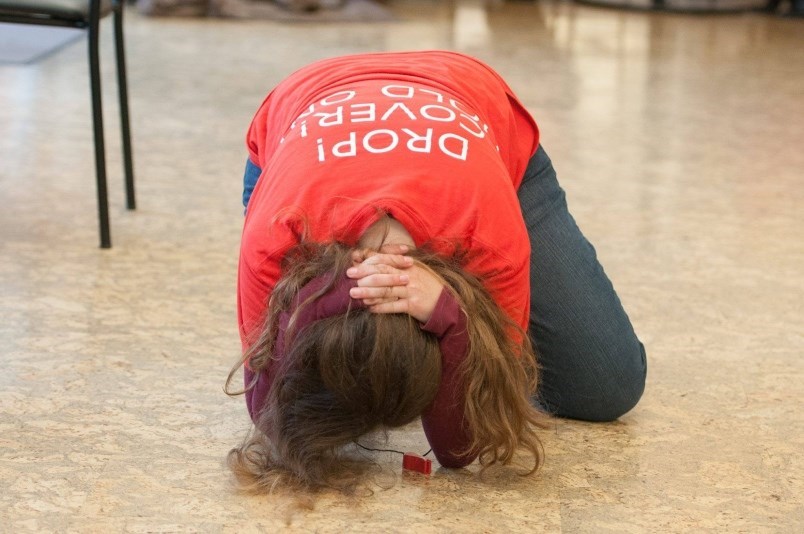With more than 3,000 earthquakes each year, British Columbia is the most seismically active area of Canada. Rather than instilling fear in B.C. residents, however, the stark statistic should serve as a reminder that it always pays to be prepared for emergency situations.
On Thursday (Oct. 20), the Great BC ShakeOut will be dishing out its annual reminder in the form of an earthquake drill, where homes, workplaces and schools will practice the 'Drop, Cover and Hold On' response. Whether in person or via Zoom, more than 500,000 British Columbians are expected to take part.
Jocelyn Hewson, public education co-ordinator for North Shore Emergency Management, said the North Vancouver team gets "very excited" about the annual event, as it gives them the opportunity to promote emergency preparedness and safety.
Hewson said we are moving towards a culture of "be prepared, not scared," and the Drop, Cover and Hold On Shakeout Drill – dropping to the ground, taking cover under a sturdy piece of furniture and holding on until the shaking stops – is an important practice that will serve the situation far better than any panic or fear will.
“Our natural inclination is to flee, and it is absolutely the wrong thing to do," she explained.
"The majority of injuries are caused by flying and falling debris such as ceiling tiles, light fixtures and items on shelves. The Drop, Cover and Hold On action helps to protect ourselves from these falling hazards."
If unable to hide under something, Hewson suggests staying low and protecting your head and neck with your arms.
Alongside knowing what to do at the time of an earthquake, Hewson also stresses the importance of preparing for its aftermath in advance.
"Following an emergency, you may be able to stay in your home but might not have basic utilities like power or water," she said. "It is important to assemble a home kit, to keep you and your family comfortable for three to seven days."
Those basic supplies should include water – four litres per person per day – and food, both for a minimum of three days. A first-aid kit, a flashlight with extra batteries, a transistor radio with extra batteries, and a phone charger and battery bank should be packed alongside tools like a crowbar, shovel, safety googles and face mask.
In terms of sanitation, she suggests stowing away garbage bags, toilet paper and wipes, alongside seasonal clothing and footwear and any items that may be specific to yours or your family's needs, like medications and diapers, or pet food.
Finally, copies of important documents, like insurance papers, identification and health-care numbers, are worth keeping handy alongside cash, in small bills.
Once the kit is prepared, Hewson suggests making an emergency plan that will help define how you and your family will respond during a disaster.
"Planning a few key things in advance can help reduce anxiety during an emergency event," she said.
"Select a household meeting place, and decide on a specific meeting spot in case you are separated from household members and can’t communicate with them."
Phone numbers of friends, family members or neighbours who can help with specific needs, like collecting the kids from school or feeding the family dog, should be on-hand, while utilities should be located in advance so they can be switched off when advised to do so by emergency officials.
The ShakeOut takes place across B.C. on Oct. 20. To register, visit the ShakeOut website.



